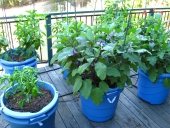posted 13 years ago
Conclusion giving enough air to plant roots is not only important to avoid excessive moisture but also to avoid wilting from excessive heat and dry.
I am planting in my bed with woody materials underneath,
compost, soil but the top half of the transplants with grass cuttings, to provide them enough air. They seem to behave better, just as it happens with you.
Our projects:
in Portugal, sheltered terraces facing eastwards, high water table, uphill original forest of pines, oaks and chestnuts. 2000m2
in Iceland: converted flat lawn, compacted poor soil, cold, windy, humid climate, cold, short summer. 50m2






